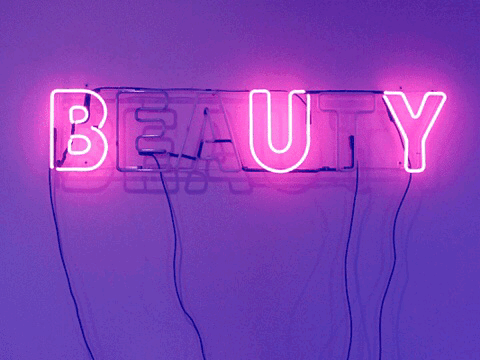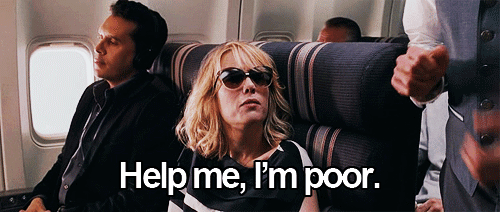Text
To Trademark or Not to Trademark
As a small business owner, you’ve put your heart and soul into building your brand. You’ve invested time, money, and endless effort into creating a unique identity for your products or services. One way to protect this hard-earned brand identity is by trademarking it. But should you? In this blog, we’ll explore the pros and cons of trademarking your business, in plain and relatable terms, so you can make an informed decision.
Choosing whether to trademark your business involves considering both the advantages and challenges. On the bright side, getting a trademark gives you exclusive rights to your brand, keeping others from using similar marks in your industry. It’s like a legal superhero cape, boosting your brand’s credibility and warding off potential imitators. But, of course, there’s a catch. The process comes with its own hurdles, from upfront costs to paperwork and ongoing maintenance. We’re here to break down these aspects, making it simpler for you to navigate and decide what’s best for your business.
Positives of Trademarking Your Brand
Legal Protection
When you trademark your business, you’re essentially constructing a robust legal fortress to shield your brand from potential threats. This fortress extends protection to key elements like your brand name, logo, or slogan, acting as a powerful deterrent against imitators. Here’s how this legal shield works:
Preventing Confusion: Trademarking grants you exclusive rights to the specific elements of your brand identity. This exclusivity is a game-changer in preventing others from adopting a name or logo that could create confusion among consumers. By securing these exclusive rights, you ensure that your customers won’t be misled or deceived by similar branding used by competitors.
Deterring Imitators: The legal protection provided by a trademark serves as a formidable deterrent against imitators. Potential copycats are less likely to risk legal consequences by adopting a brand name or logo that closely resembles yours. This proactive defense helps maintain the uniqueness and distinctiveness of your brand in the marketplace.
Preserving Brand Integrity: Your brand is more than just a name or a logo; it’s an embodiment of your values, quality, and promises to customers. Trademarking not only shields against confusion but also safeguards the integrity of your brand. This ensures that your business continues to be associated with the qualities and values that set it apart.
Consumer Trust: A clear and legally protected brand identity instills confidence in consumers. When customers can trust that your brand is the authentic source of products or services, it strengthens their loyalty. This trust becomes a valuable asset in building long-lasting relationships with your audience.
In essence, legal protection through trademarking goes beyond just securing a name or logo; it’s about creating a lasting and trustworthy impression in the minds of your customers, fortifying the foundation upon which your business stands.
Brand Recognition
A registered trademark serves as more than just a legal stamp; it becomes a pivotal trust badge for your brand, elevating your presence in the competitive landscape. Here’s why brand recognition through trademarking is a powerful asset:
Credibility Amplified: Picture a registered trademark as a seal of authenticity. When customers see that ® symbol associated with your brand, it signals that your business has undergone the legal process of trademark registration. This not only enhances your credibility but also communicates to consumers that your brand is serious, committed, and trustworthy.
Memorability in a Glance: In a world inundated with choices, being memorable is key. A registered trademark turns your brand into a visual anchor in the minds of consumers. The unique combination of colors, shapes, and words protected by the trademark instantly registers with customers, making your brand more memorable amid the sea of alternatives.
Trust in Familiarity: Familiarity breeds trust. A registered trademark fosters a sense of familiarity, and in turn, trust, among consumers. When people encounter your brand repeatedly, especially with the added assurance of legal protection, they are more likely to choose your products or services over unfamiliar or less-protected alternatives.
Standing Out in the Crowd: In a crowded marketplace, differentiation is a challenge. A registered trademark is your beacon of distinctiveness. It sets your brand apart, not just for what you offer, but for the commitment to safeguarding your identity. This differentiation becomes a strategic advantage, helping your brand shine in the eyes of consumers.
Consistency in Perception: A registered trademark ensures consistency in how your brand is presented across various touchpoints. Consistency in branding builds a coherent and unified image, reinforcing the qualities and values associated with your business. This, in turn, contributes to a more positive and enduring perception among consumers.
In essence, brand recognition through trademarking is a multifaceted tool that goes beyond mere visibility. It’s about establishing a lasting connection with your audience, building a reputation based on trust, and creating a distinctive identity that resonates in the minds of consumers.
upon which your business stands.
Asset Value
Beyond its legal implications, a trademark emerges as a valuable intangible asset, contributing significantly to the overall worth of your business. Here’s why a registered trademark is more than just a protective measure—it’s an investment that pays dividends, especially in scenarios like selling your business:
Intangible Yet Tangible Value: Trademarks fall into the category of intangible assets because you can’t physically touch or hold them. However, their impact on your business is undeniably tangible. Think of your trademark as a unique identifier, representing the accumulated goodwill, reputation, and customer loyalty associated with your brand. This intangible value can be a substantial factor in determining the attractiveness of your business to potential buyers.
Marketplace Distinction: In a marketplace saturated with options, having a registered trademark sets your business apart. It signifies a level of commitment to brand identity that resonates with consumers. For potential buyers, this distinctiveness can be a strategic advantage, offering a ready-made presence in the market and a foundation upon which to build and expand.
Consumer Trust as an Asset: Trust is a valuable currency in business transactions. A registered trademark serves as a testament to the trust your brand has garnered over time. For a potential buyer, acquiring a business with an established and trusted brand can significantly reduce the risk associated with the transition, making your business a more appealing investment.
Leveraging Licensing Opportunities: A registered trademark opens the door to potential licensing opportunities. Licensing allows other businesses to use your brand in specific ways, generating additional revenue streams. The ability to license your trademark can enhance the perceived value of your business, as it demonstrates the versatility and marketability of your brand beyond its core products or services.
Mitigating Risks for Buyers: From a buyer’s perspective, acquiring a business with a registered trademark provides a level of security. The legal protection afforded by the trademark minimizes the risk of future disputes over brand identity. This assurance can be a decisive factor for buyers evaluating various investment opportunities.
Brand Legacy and Recognition: A trademark encapsulates the legacy and recognition your brand has built. For a potential buyer, this legacy represents a valuable asset with a built-in customer base, history, and story. It becomes a foundation upon which the buyer can continue to build and evolve the brand.
In essence, a registered trademark is not just a protective measure; it’s a strategic investment that can significantly enhance the perceived value of your business. Whether you’re considering a future sale or aiming to strengthen your position in the market, the intangible assets associated with your trademark play a pivotal role in shaping the overall worth of your business.
stands.
Nationwide Protection
The significance of trademark registration extends far beyond the immediate act of securing your brand identity. Once your trademark is officially registered with the Trademark Office of the country where you intend to trade, a powerful shield of nationwide protection is unfurled. This protection is not merely a legal formality; it becomes a cornerstone for the strategic expansion of your business. Here’s why nationwide protection is a crucial asset, especially for those eyeing growth beyond local markets:
Geographic Reach Amplified: A registered trademark transcends regional boundaries, offering you a passport for nationwide recognition. This means that as your business grows, your brand is not confined to a specific locality. Nationwide protection ensures that your trademark is recognized and safeguarded across the entire country where you operate. This amplification of geographic reach is indispensable for businesses with aspirations of national prominence.
Consistency in Branding:When expanding into new markets, maintaining consistency in branding is paramount. A registered trademark acts as a beacon of uniformity, ensuring that your brand is presented consistently and cohesively across diverse regions. This consistency is not only aesthetically pleasing but also reinforces brand recall and recognition, essential elements for success in unfamiliar territories.
Navigating Complex Markets: Every market comes with its own set of challenges and nuances. Nationwide protection equips your brand with a standardized level of legal defense, allowing you to navigate the complexities of diverse markets with confidence. It provides a sense of security, knowing that your brand is shielded from potential infringements or unauthorized usage, regardless of the regional intricacies.
Facilitating Market Entry: For businesses eyeing entry into new territories, having a registered trademark simplifies the market entry process. It establishes your brand as a credible and recognized entity, streamlining negotiations, partnerships, and collaborations. This facilitation can be a decisive advantage in establishing a foothold in markets previously unexplored.
Adaptability to Business Evolution: As your business evolves, so too might your target markets. Nationwide protection ensures that your brand is adaptable to these changes. Whether you decide to expand into additional regions or refine your focus, the registered trademark provides the flexibility needed to align your brand strategy with the evolving dynamics of your business.
Competitive Edge in Expansion: In the realm of business expansion, having nationwide protection underpins your competitive edge. It not only safeguards your brand but also positions it as a force to be reckoned with. Potential competitors are less likely to encroach upon a market where your brand enjoys legal protection, giving you a strategic advantage in competitive landscapes.
In conclusion, nationwide protection through trademark registration is not just a legal formality; it is a dynamic tool that empowers businesses to expand confidently, maintain brand consistency, and navigate the complexities of diverse markets. It’s a key ingredient for those aspiring to grow their business footprint and make a lasting mark on a national scale.
Legal Recourse
When it comes to trademark infringement, having a registered trademark isn’t just a symbolic gesture; it’s a robust legal tool that equips you with a solid foundation for taking decisive action. Here’s a closer look at the avenues of legal recourse available to you when someone infringes on your trademark:
Cease and Desist Letters: The first line of defense often involves sending a cease and desist letter to the infringing party. This formal communication serves as a warning, notifying the other party of the trademark infringement and demanding that they cease using the conflicting mark immediately. Cease and desist letters are a powerful initial step, prompting many infringers to rectify the situation without escalating to more formal legal proceedings.
Negotiating Settlements: In some cases, the infringing party may be willing to negotiate a settlement outside of court. This could involve discussions on modifying their branding, compensating for damages incurred, or other mutually agreeable terms. Negotiating settlements can be a more cost-effective and expedient way to resolve trademark disputes, allowing both parties to reach a resolution without protracted legal battles.
Alternative Dispute Resolution (ADR): Alternative dispute resolution methods, such as mediation or arbitration, provide additional avenues for resolving trademark disputes without going to court. These processes offer a more collaborative and flexible approach, allowing the involved parties to work towards a resolution with the assistance of a neutral third party.
Filing Lawsuits: If cease and desist letters and negotiations prove ineffective, the next step is often filing a lawsuit in a court of law. A lawsuit asserts your legal rights and seeks remedies for the infringement, such as injunctive relief to stop the infringing activities, damages for any harm caused, and, in some cases, recovery of legal fees. Filing a lawsuit is a more formal and structured process, often requiring legal representation to navigate the complexities of the legal system.
Injunctive Relief: In trademark infringement cases, obtaining injunctive relief is a critical objective. An injunction is a court order that prohibits the infringing party from using the contested mark. This is a powerful tool to swiftly halt any further damage to your brand and protect your exclusive rights.
Monetary Damages: In the event that your brand has suffered financial losses due to the infringement, you may be entitled to monetary damages. These damages can encompass actual losses, such as lost profits, as well as statutory damages, which are predetermined amounts set by law and awarded in certain cases.
Enforcement of Decisions: When a court issues a decision in your favor, it becomes essential to enforce that decision. This may involve ensuring that the infringing party complies with the court’s orders and takes the necessary actions to rectify the infringement. Enforcement mechanisms vary but may include further legal proceedings if compliance is not achieved willingly.
In summary, having a registered trademark provides you with a range of legal tools to protect your brand. From initial warnings to formal legal action, the ability to enforce your exclusive rights ensures that your brand maintains its integrity and remains shielded from unauthorized use by others.
Downside of Trademarking Your Brand
Time-Consuming
Embarking on the journey to trademark registration demands not just financial commitment but also an understanding of the temporal intricacies involved. Here’s a comprehensive look at the time-consuming nature of this crucial process:
Application Review Period: The initial step involves the submission of your trademark application to the relevant government agency, marking the commencement of the review process. This stage alone can stretch over several months as examiners meticulously assess the application for compliance with legal requirements. The complexity of the application, the backlog of cases, and the specific procedures of the trademark office contribute to the variability in review timelines.
Office Actions and Responses: It’s not uncommon for trademark applications to face challenges in the form of office actions. These are official notices from the trademark office pointing out issues or seeking additional information. Addressing these actions requires careful consideration and often involves a back-and-forth exchange with the trademark examiner. Each round of responses and reviews contributes to the elongation of the overall timeline.
Publication and Opposition Period: Once your application clears the examination stage, it moves to the publication phase, where it is made public for a specified period. During this time, third parties have the opportunity to oppose your trademark if they believe it conflicts with their existing rights. The duration of this opposition period adds another layer to the time investment required for the registration process.
Proactive Search: Before even initiating the official application, businesses are advised to conduct a comprehensive search to identify potential conflicts. This proactive step, while not mandatory, is time well spent in preventing complications later in the process. Ensuring that your proposed trademark doesn’t infringe on existing rights can save valuable time during the official examination.
Complexity of Trademark Classifications: Trademarks protect specific classes of goods or services, and understanding the nuances of these classifications is crucial. Ensuring accurate classification in your application is not only a legal requirement but also a meticulous process that can contribute to delays if not approached with precision.
Legal Expertise and Strategy: Engaging legal assistance, while beneficial, can introduce an additional layer of time. Crafting a strategic approach, responding to office actions, and navigating any potential legal challenges are processes that demand careful consideration. However, this investment in legal expertise can prove invaluable in expediting the overall timeline and minimizing the risk of setbacks.
Overall Duration: In the aggregate, the trademark registration process can extend over several months to even years, depending on various factors. The commitment of time is not just in waiting for official responses but also in actively managing and responding to the requirements and challenges that arise throughout the process.
Understanding and anticipating the temporal dimensions of trademark registration is essential for businesses to set realistic expectations, plan strategically, and navigate the intricacies of the process with patience and foresight. The investment in time is not merely a hurdle but a crucial element in securing the long-term exclusivity and protection of your brand.
Cost
For small business owners with a keen eye on their budget, the decision to register a trademark involves a careful balancing act. Here’s a closer look at the financial aspects to consider:
Initial Filing Fees: The journey begins with the initial filing fees. This is often the first hurdle for businesses, especially those with limited financial resources. These fees cover the formal application process, where your trademark is officially submitted to the appropriate government agency for examination. While these fees can vary, they represent the upfront cost of securing legal protection for your brand.
Ongoing Maintenance Costs: Beyond the initial filing, trademark registration incurs ongoing maintenance costs. To keep your trademark active and fully protected, periodic renewals, filings, and fees are necessary. These maintenance expenses are crucial aspects of preserving your exclusive rights to the trademark over time. It’s essential to factor these recurring costs into your budgetary considerations to ensure sustained protection.
Legal Assistance Expenses: While not mandatory, seeking legal assistance during the registration process can be an additional cost. Many businesses opt for legal guidance to navigate the complexities of trademark law, ensuring that their applications meet all requirements and are less likely to face challenges. Legal support can be particularly beneficial in avoiding costly mistakes that may lead to delays or complications.
Search and Clearance Costs: Before officially filing for a trademark, conducting a thorough search to ensure that no conflicting trademarks already exist is a recommended practice. While this step may not always result in a direct financial cost, it’s worth considering the time and resources involved in this preliminary clearance process. Identifying potential conflicts early on can prevent costly disputes down the road.
Potential for Opposition Proceedings: In some cases, after filing your trademark application, there may be opposition proceedings initiated by third parties who claim conflicting rights. While this doesn’t always happen, it’s a scenario to be prepared for. Responding to oppositions, if they arise, may involve additional legal fees and could potentially impact the overall cost of the registration process.
Return on Investment (ROI): It’s essential to view the costs associated with trademark registration as an investment in the long-term success and protection of your brand. Consider the potential return on investment in terms of enhanced brand recognition, customer trust, and the ability to distinguish your products or services in the marketplace.
In conclusion, while the costs of trademark registration can pose challenges, viewing them strategically as an investment in the longevity and exclusivity of your brand can help small business owners make informed decisions aligned with their budgetary constraints and long-term business goals.
Limited Protection
While the protective umbrella of a registered trademark is robust, it comes with a defined scope, often centered around specific classes of goods or services. Understanding the intricacies of this limitation is crucial for businesses seeking comprehensive brand protection. Here’s a comprehensive look at the concept of limited protection in trademark registration:
Classes of Goods and Services: Trademarks are categorized into classes, each representing a distinct category of goods or services. The classification system is extensive, encompassing everything from apparel and technology to food and entertainment. When registering a trademark, you must specify the classes that accurately reflect the nature of your business activities. This specificity ensures that your protection is tailored to the areas directly relevant to your brand.
Scope of Protection: The protection afforded by a registered trademark is confined to the classes you’ve selected during the application process. For example, if you’ve registered your trademark for “clothing,” your protection is limited to that specific category. This means that while you have exclusive rights to use the trademark in connection with clothing, someone else could potentially use the same or a similar mark for unrelated products, such as “food.”
Potential for Conflicting Marks: The limitation in protection opens the door to the possibility of conflicting marks existing in other classes. Even if your trademark is distinctive and unique within your registered classes, there’s a chance that a similar or identical mark may be registered by another entity in a different class. This underscores the importance of conducting thorough searches not only within your specific class but also across relevant categories.
Comprehensive Brand Strategy: Crafting a comprehensive brand strategy involves strategic thinking about potential expansions into different markets or product lines. If your business diversifies its offerings beyond the initially registered classes, there’s a need to revisit and potentially expand your trademark registrations to maintain a consistent and protected brand identity.
Monitoring and Adaptation: Recognizing the limitations of protection prompts the need for vigilant monitoring. Regularly checking for potential conflicts or new trademark registrations, even in unrelated classes, allows you to stay proactive in safeguarding your brand. If a conflicting mark emerges, it provides an opportunity to assess potential risks and take appropriate action, such as opposing the registration or negotiating coexistence agreements.
International Considerations: If your business operates internationally or has aspirations for global reach, understanding the trademark classes in different jurisdictions becomes paramount. The classification systems may vary, and a mark registered in one country for specific goods or services may not automatically grant protection in another jurisdiction.
Strategic Portfolio Management: As your business evolves, so too should your trademark strategy. Strategic portfolio management involves periodically reassessing your brand’s protection needs, considering potential expansions into new markets or product categories, and adjusting your trademark registrations accordingly. This proactive approach ensures that your brand remains adequately protected amidst the dynamic landscape of commerce.
In essence, while trademarks offer robust protection, it’s crucial to appreciate the concept of limited protection within specific classes. This understanding empowers businesses to strategically navigate the trademark landscape, anticipate potential challenges, and proactively manage their brand identity across diverse categories of goods and services.
Maintenance
Registering a trademark is not a one-time endeavor; it demands ongoing attention and adherence to maintenance requirements to ensure the sustained protection of your brand. Here’s a comprehensive exploration of the maintenance aspect in trademark registration:
Renewal Filings: Trademark registrations come with expiration dates, and to keep your protection intact, you must file renewal documents periodically. The frequency of these renewals varies by jurisdiction, but they typically occur every 10 years. Failing to file timely renewal documents can jeopardize the validity of your trademark, leaving it vulnerable to cancellation.
Documentation Updates: Changes to your business name, address, or the ownership of the trademark must be promptly updated with the relevant trademark office. Maintaining accurate and up-to-date information is not only a legal requirement but also essential for effective communication between the trademark office and the trademark owner.
Declaration of Use: In some jurisdictions, trademark owners are required to submit declarations of use, confirming that the registered mark is actively being used in commerce. This serves as evidence that the trademark is fulfilling its intended purpose. Failure to provide these declarations may result in the cancellation or limitation of your trademark rights.
Payment of Fees: Regular payments of maintenance fees are a fundamental aspect of keeping your trademark active. These fees contribute to the ongoing administrative and legal processes that uphold the integrity of the trademark system. It’s imperative to be aware of the fee schedules, deadlines, and any potential changes in fee structures to avoid unintentional lapses.
Monitoring for Deadlines: The responsibility for maintenance extends beyond the initial registration. Trademark owners must be vigilant in monitoring deadlines for renewal filings, fee payments, and other required submissions. Developing a system for tracking these deadlines, whether through internal processes or with the assistance of trademark management software, is crucial for staying compliant.
Consequences of Non-Compliance: Failure to adhere to maintenance requirements can have severe consequences, including the cancellation of your trademark. Once a trademark is canceled, the exclusive rights associated with it are forfeited, leaving the brand vulnerable to unauthorized use by others. Reinstating a canceled trademark can be a complex and time-consuming process.
Proactive Management for Longevity: Proactive trademark management involves more than just meeting minimum requirements; it’s about nurturing the longevity and strength of your brand. Regularly reviewing your trademark portfolio, reassessing your business strategies, and adapting your trademark registrations to align with evolving market dynamics contribute to the overall health and resilience of your brand assets.
Global Considerations: For businesses with international operations or aspirations, understanding and complying with maintenance requirements in different jurisdictions is crucial. Each country may have its own set of rules and timelines, necessitating a tailored approach to global trademark portfolio management.
In conclusion, the maintenance of a trademark is not merely a legal obligation; it’s a strategic investment in the continued vitality of your brand. Proactive and vigilant management ensures that your trademark remains a robust asset, capable of withstanding the tests of time and market evolution.
Enforcement
While the legal framework provides you with the right to enforce your trademark, the onus of vigilance and action lies squarely on your shoulders. Enforcing your trademark is not just a legal matter; it’s an ongoing commitment to safeguarding your brand integrity. Here’s a comprehensive look at the enforcement process:
Active Monitoring: Enforcing your trademark begins with proactive monitoring. Regularly scouring the market, both online and offline, for potential infringements or unauthorized use of your trademark is essential. This active vigilance helps identify potential threats early on, allowing for timely and effective responses.
Trademark Watch Services: Consider employing trademark watch services, which use advanced monitoring tools to track new trademark applications and registrations that may conflict with yours. These services provide an additional layer of surveillance, ensuring that potential infringements are promptly brought to your attention.
Cease and Desist Letters: When unauthorized use of your trademark is identified, sending a cease and desist letter is often the initial course of action. This formal communication demands the infringing party to stop using your trademark and may include details of potential legal consequences. Crafting an effective cease and desist letter requires legal precision and may benefit from the assistance of legal professionals.
Negotiation and Settlement: In some cases, negotiation and settlement discussions may ensue after the issuance of a cease and desist letter. This could involve reaching an agreement with the infringing party, modifying their branding, or establishing coexistence terms. Negotiations require strategic finesse, and legal assistance can be invaluable in navigating these discussions.
Alternative Dispute Resolution (ADR): Alternative dispute resolution methods, such as mediation or arbitration, provide alternatives to traditional litigation. These approaches can be less formal, more flexible, and potentially more cost-effective. Engaging in ADR requires a careful assessment of the specific circumstances and a willingness on both sides to explore non-adversarial resolutions.
Litigation as a Last Resort: If all else fails, litigation may become necessary to protect your trademark rights. Filing a lawsuit asserts your legal claims and seeks remedies through the court system. Litigation, while a powerful tool, is often time-consuming, resource-intensive, and should be considered as a last resort due to its inherent complexities.
Global Enforcement Challenges: For businesses with a global footprint, enforcing trademarks across borders introduces additional challenges. Varying legal systems, cultural nuances, and linguistic differences can complicate the enforcement process. Coordinating international enforcement efforts may necessitate collaboration with legal experts in each jurisdiction.
Costs and Resource Allocation: Enforcement efforts incur costs, both in terms of legal expenses and the allocation of internal resources. Balancing the need for stringent enforcement with practical considerations, such as budget constraints, requires a strategic approach. It’s crucial to assess the potential impact of infringement on your brand and allocate resources accordingly.
Educating Stakeholders: Beyond legal measures, educating stakeholders, including employees, distributors, and partners, about the importance of trademark protection is essential. Building a culture of awareness helps create a network of brand advocates who can contribute to identifying and addressing potential infringements.
In essence, trademark enforcement is a multifaceted endeavor that demands a strategic blend of vigilance, legal acumen, and resource allocation. It’s a continuous commitment to maintaining the exclusivity and distinctiveness of your brand in a dynamic and often challenging marketplace.
In conclusion, the decision to trademark your business is not merely a legal formality but a strategic investment in the longevity and exclusivity of your brand. The robust protection afforded by trademark registration spans legal rights, brand recognition, asset value, nationwide reach, and the ability to enforce your identity in the marketplace. While navigating the complexities of trademark registration may seem daunting, the benefits far outweigh the challenges. At Support My Empire, we understand the intricacies of brand protection and offer expert guidance to steer you through the entire process seamlessly. Our team of experienced trademark consultants is dedicated to helping businesses, big and small, secure their brand identity. Don’t leave the integrity of your brand to chance—contact us today to embark on the journey of trademarking and fortify your business for enduring success.
#missmafia#entrepreneur#inspiration#home & lifestyle#business#trademark#trademark registration#brandlicensing#small business
1 note
·
View note
Text
Recognising Low Self-Esteem and Poor Self-Confidence
Workaholism Recognising the signs
The first step in being able to beat anything is recognition. Recognition that you are dealing with something that matters to you and recognising how you are currently trying to deal with it. Usually we deal with things through distractions.
Many people live their entire lives without getting to the source of what originally caused their feelings of low self-esteem. We band aid fix because we are unaware how we can heal our painful past and reframe the circumstances that originally resulted in interpretations of being unworthy, unlovable, or deficient in some way,
This is done by often resorting to finding ways to distract ourselves from the unpleasant sensations that accompany feeling inferior.
Instead of silencing the nagging voice of past hurts, we seek out distractions to help us temporarily forget about their lacking confidence and deficient self-image.
What are the most common distractions?
Both men and woman have different ways of dealing with a lack of confidence. This means they also have different distractions to deal with how they feel.
Five of the more common ways to relieve the pain of low self-esteem and poor self-confidence involve excessive attention to work, food, sports, sex, or even shopping. Like all addictions, they help us to distract from but the do not resolve the underlying problem. We we mask our feelings it is only temporary and we are still plagued by feelings that will continually require greater efforts each to time to hide from.
Workaholism
In our culture, work is usually an acceptable means of diverting our attention. Through hard work, we busy ourselves to the extent that we lack the free time needed to brood over our sorrows. When we work excessively we are often too tired to worry about a lacking social life or the pursuit of fun pastimes. Work provides rewards such as money, recognition, and a feeling of accomplishment, all of which help to compensate for feelings of failure in other areas of life.
We are not saying that a commitment to work is bad. It is quite admirable as just one component to a well-balanced life just don't pursued to excess. An obsession with work can take its toll on health, relationships, and missed opportunities for other equally valuable pursuits.
Feelings of low self confidence and little self-esteem diminish our energy by consuming attention that could have been spent more productively in the joyful pursuit of our goals, rather than a distraction from persistent negative self-talk.
Over eating / Under Eating
Like working excessively, an obsession with food is often a common escape from feelings of unworthiness. Eating or not eating can serve both as a distraction and a way to make ourselves feel better temporarily.
We often seek from food the emotional connection that we are lacking in close, intimate relationships. Subconsciously, food is linked in our minds to happy times with family or friends. For many, food has become synonymous with love. And so in times of stress, fear, and loneliness, many of us turn to food to fill a void that only love and self-fulfillment can satisfy. The greater the feelings of loneliness the more we tend to eat and seek out food of comfort.
Habitual overeating also results in being out of shape, overweight, and generally a feeling of being unattractive in the paradigm of Western modern-day culture. The more we eat as a substitute the more we gain weight. This in turn reinforces the feeling that the heavier the person becomes, the less we fit in and the lower our self-esteem and self-confidence plummets.
However it can work in the reverse where we feel that we are not worthy to eat because we have not earned it. Sometimes we can feel so down and depressed that we don't feel hungry and therefore don't eat. Food then loses it's taste and becomes undesirable. As we lose weight we feel we are achieving something positive because we see so many ads that weightloss we make us loved or popular or wanted more. We set ourselves into a vicious cycle that is giving us a lower self confidence and a lower self-esteem.
Whether we are overworking, over-eatings, under eating, doing excessive exercise or excessive sex or excess shopping or one of the countless other addictions that people resort to in an effort to find meaning in life, the bottom line is we are masking our own self-worth. When we do these things as a distraction we lack inner peace will not find it by covering up the feelings of being unworthy or unlovable.
The first sign to being able to beat anything in life is recognition.
If you want further email self help with gaining self confidence and self esteem sign up to our 3 week FREE email course. We will send you 12 emails with advice and ways to combating those distractions and feelings and help you gain that self worth you deserve!
#missmafia#missmafiaempire#mymafiaempire#selfconfidence#self esteem#confidence#confident#businesstips#selfhelp
0 notes
Text
Return On Investment
RETURN ON INVESTMENT (ROI)
ROI: The Mathematics of Profit Explained
The materials come in and the products go out. You fulfill orders at a healthy pace, keeping the customers happy. Still, how well are you actually doing? A basic return-on-investment calculation can help you monitor funds so you can track performance across an array of product lines.
Return-on-investment, abbreviated ROI, measures how much money was made on a venture as a ratio of the purchase price. It shows business owners how efficiently each dollar they invest is producing a profit. The ROI can be presented as a ratio or a percentage. It is either positive or negative. Here’s the ratio calculation, which can be converted to a percentage by multiplying by 100.
ROI = ( Fee to customer – Cost to produce product ) / Cost to produce product
Subtract the cost you pay to produce your product from the fee you bill the customer for that same product or service, and then divide that number by your production cost. This formula presents the ROI as a ratio.
As a very simple starter, let’s take the humble cheese pizza as our example. For simplicity, let’s limit our costs to the cost of the materials. A bag of grated cheese costs $5.00, a can of tomato sauce, $3.00, pizza dough for one large pie, $8.00. My total cost in materials is the sum of these groceries, $16.00. My customer is billed $24.00 for the baked pizza…
My ROI is 0.5 as a ratio or 50% as a percentage.

A positive ROI is considered a good return. It indicates that the cost to produce the product is being recouped and a profit is being earned. A negative ROI, meanwhile, indicates that insufficient money is being earned on the sale of the product to cover the cost to make it. A higher positive ROI indicates a product that is better at earning a profit. A higher negative ROI indicates the opposite.
As a very basic calculation, we see in the example of our cheese pizza, that only the cost of materials and the fee to the customer was taken into account. More advanced (and more realistic) calculations will factor in labor, expenses associated with the “cost of doing business,” as well as fees associated with various business hardware.
For example, our above calculation did not consider the wages paid to the folks rolling the dough or baking the pie. (Neither did it factor in a reasonable portion of the building lease, the electric bill, the insurance costs, or the maintenance of the pizza oven. Business accountants of large-scale corporations will do this and more in their ROI analysis.) Wages can be added, in their respective part, to the Cost to produce the product above. They should be portioned respective to the time necessary to produce one unit of the product in question.
For instance, let’s say our cook earns $12.00 per hour. He needs ten minutes to make an oven-load of cheese pizzas. The oven holds ten pizzas at a time. Simple math tells me that I’m getting one cheese pizza per minute. Therefore, 20 cents of his $12.00 per hour wage is used in the production of each cheese pizza. I can add that 20 cents to the $16.00 cost of materials. My cost to make one pizza is now factoring in labor. My ROI is now 0.48, or 48%, having taken the cook’s wages into consideration. A realistic ROI will consider all applicable costs associated with the production of the product. Your ROI calculation will depend on the costs associated with making the unique products that you supply.
#missmafia#missmafiaempire#businesswoman#ceo#ceolife#roi#missmafiafashion#consultant#success#businessplans#planning#goals#goalgetter#investment#strategy
2 notes
·
View notes
Photo

What would it take for you to make it happen? Comment below! https://www.instagram.com/p/BxHanHMJ8q7/?utm_source=ig_tumblr_share&igshid=u5ulu4vwyfdw
0 notes
Text
Trade Marks?
Do you know the difference between a Trade mark and a Business Name? Have you protected your Brand and Hard Work? Are you infringing on someone else’s Brand?
What is a Trade Mark....
A Trade Mark (TM) is a recognized image or word that distinguishes you from your competitor. Registering your unique mark as a TM will protect you from other businesses trying to use the identical mark to their advantage.
A mark could be identified as
any letter,
word,
brand,
label,
image,
shape,
color,
sound,
scent,
name; or
signature.
A TM will build your brand and reputation within your industry.

Trade Mark or Business Name....
Having a registered Business Name will not protect your Brand. People often confuse registering a Business Name and a Trade Mark.
Trade Mark
A Trade Mark will identify your product or service in a particular class. A Trade Mark will distinguish you from your competitors in the Marketplace.
Business Name
A business name is a name that is used to identify a business, not a product or service. A business name is also used to describe a sole trader
The registration of a business name is to identify the legal trading name of the trader. A Business name can have many different registered Trade Mark products or services.

Can I register anything as a Trade Mark?
Each country has a standard guideline of what can and can’t be registered. Some countries may be stricter than others depending on culture and beliefs.
A TM can not be identical to another registered TM and cause confusion if the 2 marks were to be registered.
If you proceed to try and register a mark that is identical or mistakenly similar to an already registered mark you could be seen as infringing on that other mark. This could then lead to passing off.
Is my Trade Mark Worldwide?
When a Trade Mark is registered, it is registered in that Country only. If you trade in other countries you will need to register your Trade Mark in those countries as well. Each country has representatives that you can use to assist in your registrations. Ensure that you have a reliable authorized representative.

#missmafia#missmafiafashion#missmafiaempire#style#stylish#business#entrepenuership#success#positive#trademark#brand#advice#goals#achievement#empire#nike#justdoit#protect#enforce#infringement#businesswoman#fashion#designer#inspiration
2 notes
·
View notes
Text
Do you know how to identify your customers?
We all know that we have to have a Business Plan and Financial Plan however do you also have your Marketing Plan?
A marketing plan will help you identify your customers and competitors while helping you keep competitive in today’s market.

Do you rely on just one form of advertising?
I hear a lot of people say how they have invested a lot of money in marketing and their business never got noticed. I ask them where did you advertise? Facebook. Facebook is great for marketing but not the only place you should invest in.
Yes there are millions of people everyday on Facebook or any other social media platform. Think about this though. How often are you on there? How many pages do you follow? If the same 100 pages posted at the same time would you see all of their posts on your feed that day? Are all the people that see your post your ideal customer or just followers of your page?

What does your customer look like?
If you were to sit and think right now about the customer you want to buy your product what would they be doing? What would they look like right down to the hair color? If you could create characters that would only buy your product or service what would they be like? What jobs would they work? What lifestyle would they live? What car would they drive? To be able to have a successful marketing campaign to target your clients you firstly need to create a customer Avatar.

Customer Avatar then Marketing Plan
Analyse and develop your Customer Avatar first then do your marketing plan..
Having a well defined, planned marketing plan will be more successful then a broad lets target everyone marketing plan! You can develop and maintain your marketing plan yourself or you can invest in someone to assist you. Which ever way make sure you review and keep it up to date regularly.
Checkout my website for more downloadable templates! https://missmafia.com/empire-home/
#blogger#style#motivation#entrepreneur#business#quotes#lifestyle#inspire#customer#avatar#goals#love#missmafia#missmafiafashion#missmafiaempire#queen#success#businesslife#positive#stylish#hardwork#money#empire#life goals#goalsetting
1 note
·
View note
Text
Do I have enough in my budget?
Thinking about business finances can be daunting. Do you have enough in your budget? Have you under budgeted and now struggling? How do you overcome the Financial stress of running a business?

I am constantly asked how much money did I have when I started my business. I had only $1000 however I started small, very small and grew. I had my financial plan and I have very realistic profit and loss margins. Because I was also importing from USA I checked the financial markets and researched what twas the lowest dollar exchange in history. That exchange rate what is what I also base my currency conversion on even to this day.

A financial plan is extremely important to have. This plan will help you forecast your expenses and income and help guide you on where you need to be financially. If you do not have this plan you will not be able to budget for unexpected expenses or even be able to tell if you are making a profit. You need to budget for everything from taxes and stock expenses to supplying water for staff to drink while on shift. No expense is too big or too small to budget in your financial plan. A financial plan will help you set financial goals and milestones on where you want your business to go in the future. A financial plan is also helpful for when you need to go to a bank to apply for a business loan. You can show the bank or financial lender where you are making profit and your predicted forecast of financials in the next 6, 12, 18 and 24 months.
#missmafia#missmafiaempire#missmafiafashion#business#life#home & lifestyle#love#positive#finance#money#cash#cash money#makeup#mua#fashiondesigner#designer
1 note
·
View note
Text
Are you Living your Dream Life?
What does your Dream Life look like? If you could choose anything in the world what would it be right now? This isn't a gimmicky email trying to sell you anything. And to be honest I hate sending emails that are purely sales.
I thought i would change this up :)
No matter if we are working for a company or small business or we are working for ourselves are we really being true to ourselves and enjoying life to the max we can?

I wish I could do more BUT......
For starters get rid of that BUT ..... When I started my career I was once told in a course never use the word BUT to join a positive sentence with a negative sentence. For example I would love to do this BUT I don't have time. Essentially the BUT cancels out the positive. We all have that BUT. We all say that BUT. Next time you think about doing something that you have always wanted or dreamed of remove the BUT when you go to explain the reason why you can't. You will be surprised that can't (BUT) will end up turning into a Hey, actually I can if I do this I could do X Y Z.

YOU ARE ENOUGH!
The number one excuse stopping people from living their dreams is the fear of they aren't enough. They don't have enough skills, they aren't smart enough, they don't have enough time, They aren't young enough. You know what? YOU ARE ENOUGH! You are 100% enough to live your own dreams! We are so caught up in a world of social media and online that we sub-consciously now compare ourselves to everyone else whether its a model in an advert or the next door neighbor that we are secretly stalking on Facebook who looks like they have it all. We have started to become this culture of self doubters and self destructive thinkers that we aren't good enough to live our own self happiness.

One last thing.
I am going to send this out to you often not because I want to sell to you because I want to be your cheerleader in life, in business and in living your dreams. I produce products because it makes me happy seeing customers faces when they buy them. I now offer business services in my Company not because I want to make money because I wantothers to be happy. I want everyone to live their dreams whether that is going on their dream holiday or openign their dream business. My wish is fro each one of you to honestly live your dreams. HAPPY THURSDAY! Thank you for your time!

#missmafia#missmafiaempire#missmafiafashion#missmafiaclothing#business#love#life#inspration#dreamlife#dream#positive
0 notes
Photo

Plan, Plan, Plan and more Plans - I'm dizzy!
“Where’s your Marketing Plan?” They yell. “I need your Financial Plan!” Another person yells across the small office floor that I lease in central Manhattan.
Everyone wants to see my plans. It’s overwhelming to say the least. Where do you start and when do you start with all the documented plans. How do you know what to write? How do you know if what you write is correct? How do you know you have written all the plans that you need? I am dizzy just thinking about this all!
Let me tell where to start! Once you have made that decision to turn your dream into your new reality you need a Business Plan. The business plan is your hierarchy, top level over arching document. This plan is the blue print of your business operations and will then help you when you write you Financial and Marketing Plans.
A Business Plan identifies your objectives and outlines the strategy that you plan to undertake to achieve the objectives. But what is an Objective and a Goal? Aren’t they the same? A goal is the description of what you want to achieve and the objective is the measure on how you will achieve it.
Your Business Plan structure should be applied as follows:
A Cover Page
Table of contents
Summary
Mission Statement
Goals
Owners / Directors
Structure of the business / Company
Industry overview
Business Overview
Products or Services
Marketing Overview
Competitors
Market assessment
Financial Assessment
Risk Assessment
Exit Plan
Appendix
You can alter and add more to this list. This list is the minimum of structure that you should create your Plan around.
When writing your own business plan you need to make sure that the plan is:
Clear and Concise
Simple and Consistent
Factual and Logical
Inclusive; and
Manageable.
Don’t add too much detail to your Business Plan keep it very professional, focused and factual.
How often does this Business Plan need to be updated? Like any plans a business plan needs reviewing and updating. Initially as your are starting your business I recommend reviewing your Plan weekly or every 2 weeks to make sure things are traveling smoothly. This doesn’t mean that you have to rewrite the plan every week just sit with a coffee and a clear mind and read it. Once you feel comfortable review your plan once a month. If you need to review the plan more frequently than do so. Just remember the Business Plan is your Business Bible, but you do not need to review it daily.
#missmafia#businessplans#entrepreneur#business#inspiration#motivation#girlgang#success#positivevibes#quoteoftheday#weekend#fashion#lashes
1 note
·
View note
Photo

#missmafia#kirstywhitaker#business#entrepreneur#bossbabe#successful#inspiration#positive#quoteoftheday
1 note
·
View note
Photo

I have created the Empire to give people inspiration and hope. To let people know that no matter where you come from you can defy all odds and honestly be who you want to be and more. Before I tell you about my successes in life I have to tell you where I came from.
I want to dedicate my whole business life to my grandmother. She is known to everyone as "Mum". She is my rock, my savior and without her I would not be here today. She may not have given birth to me but she is the only mum I have.
I am Sicilian and the eldest of technically 7 brothers and sisters. I only grew up with and remain close to 1 sister.
My biological parents were 16 and 18 when I was born. At 3 months of age they broke up resulting in my mother slamming my head against the road to seek revenge on my dad. My parents weren’t normal in the way they wanted to live life. Bless my mother’s parents (my grandparents especially my grandmother) they came to my rescue, offering my mum to live at home with me and to go to school. My mum rejected the offer however left me with them.
That was the last I was to see my mum or dad for the next 4 years. My grandparents had two sons living at home and were beyond broke. My granddad was a 38 retired injured Vietnam War Veteran and my grandmother a stay at home mother and carer. And in May 1984 ended up with a new born to raise as their own.
4 years later my mother appears back with a new child (my sister) who was 6 months and left her on the doorstep in the pouring rain. She walked off again and never came back. My grandparents that day made the decision to give my sister and I the best chances at education and life so that we would never end up in these situations.
My grandparents took all their money they had and borrowed money from family to send us to the local private girl’s college. Immediately I was an outcast as I didn’t have normal parents and I didn’t have money like the other girls. My own family would outcast my sister and I and would always say it was such a shame that we had a mother like ours and they felt sorry for us as we would end up just like her.
My grandparents never spoke an ill word about my parents no matter how much they were absent or never financially supported us. They would always say they are coming home soon or they were at work. One night I overheard a conversation that my dad was possibly working for the mafia, I was 8. I went to school and told the few friends I had, “I live with my grandparents and my dad is away working for the Mafia.” My friends obviously told their parents who called my grandparents and told them they should invest in a shrink as I was a very bad child. I never had friends after that. At that time, it was unheard of that grandparents raised their grandchildren. My grandparents were extremely conservative. From that day on I was not allowed to discuss my family outside of our home. I still didn't learn what the Mafia was until I was 16.
School Holidays were spent going over school work. I was an A student all through primary school except I had one dilemma, I could never understand. I could never understand why my parents would never visit me or call me. As I became older I found out why – they were career criminals and had chosen that life over their kids. I thought that if I became a prosecutor I could find them and arrest them so I could ask them why.
By high school I started rebelling. I was suspended and refused to go to school. We were broke, the other girls hated me and I was over being bullied everyday I went to class. This was the era of the start of the internet. I learnt how to create a website in my lunch brakes at school and I created a website publicly shaming the girls that bullied me by calling them prostitues and giving out their contact details. Yes that was me. I was expelled immediately.
My grand scheme was to be expelled so that I could open my business but little did I know I had to be 18. My grandparents took me for interview after interview at other private girl’s schools where I would swear at the admissions clerk. Finally, they allowed me to attend the local state high school. I had no interest in school and I was only there because I had to do it. I would attend roll call and then leave to walk to the local shopping centre so I could look at fashion. I rebelled even WORSE. I was the girl your parents would tell you to stay away from. I was mouthy and I didn’t care what anyone thought. I would do things to upset my grandparents purposely so I could debate them. I would walk out of the house and hang out with the local boys I grew up with on my street so I could race cars every night. We would pull apart engines and race. I would not come home until after midnight.
End of year 10 I ran away to where my mum and my dad lived. I knew where my mum lived so at 15 I packed a bag and caught the train to where she was. I lived with her and my step dad for 3 weeks. My step dad never knew what my mum did when he wasn’t there. I saw what she did. My dad would come over to her house. The things I heard and the lifestyle I saw they lived made me regret my decision to wanting them in my life. I called my grandparents and begged them to let me back. They did.
Year 2000 nearly 16 and a year 10 certificate, I was ready to start my life in the big world. My grandparents still would not allow me to leave school however made a deal with me. It was a Wednesday and if I could have an apprenticeship by end of that Friday I didn’t have to go back and do year 11. The apprenticeship had to be a “real” job in their eyes. No fashion or hairdressing. If not, I had to return to year 11 that following Monday. I grabbed the newspaper and saw the local dental surgery wanted a training dental nurse. I rushed down there to apply. I told the senior nurse that it was my long-lost dream to be a dentist but I had trouble learning at school. They saw that I had attended the private girls school and that had weight. I was given the job straight away. I went home and sat around. My grandparents said you better start looking it Thursday and tomorrow is Friday with a smirk on their faces. I looked them straight in the eye and said I have a job. I start tomorrow I am officially a training dental nurse! They looked at me and said “but you hate the sight of blood.”
I worked as a dental nurse during the day and late nights and weekends in a menswear retail store where my manager was always too busy at the pub so she taught me how to run the store for her. I loved retail. As soon as I turned 18 I registered my first business but I didn’t know where to start. There was a local popular fashion store just opened and were looking for store managers. I applied. I lied on my resume and I am sure they knew. I said that I had 2 years’ experience as a manager already for a local high-performance car shop. The car shop owner gave me a reference to say the same. The owner was actually my fiancé at the time. They put me in the store and told me it was a C grade store and they didn’t expect it to last let alone make money. I asked them what store their A grade store was and what figures they were turning over. I made them a deal that if I beat that store and maintained beating that store I wanted the 30% commission plus a bonus of 15% additional commission and based from the store turnover not profit. They laughed and agreed. I started 30 September. My budgets came out. I threw it in the rubbish and wrote my own. I told my staff that if they didn’t make the figures I set they were fired. In the first week 2 of the staff thought I was joking. I fired them. I hired new staff. End of Oct we beat the A grade store. November and December were the same. I turned the C grade store into the best revenue store. I ended up becoming the area manager in January the next year. I was responsible for budgets, staffing, training and stock ordering. The stores I ran like my own. They owners would always fly out to Vegas for "buying trips". By March my wages stopped being paid and so did the staff's. We couldn’t get a hold of the owners and by May the Company had gone into receivership. The owners had gambling problems and lost everything in Vegas.
This is everything that lead me to opening my first store.
#missmafia#kirstywhitaker#business#bossbabe#businesswoman#entrepreneur#inspiration#motivation#positive
1 note
·
View note